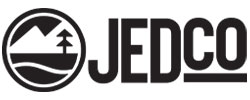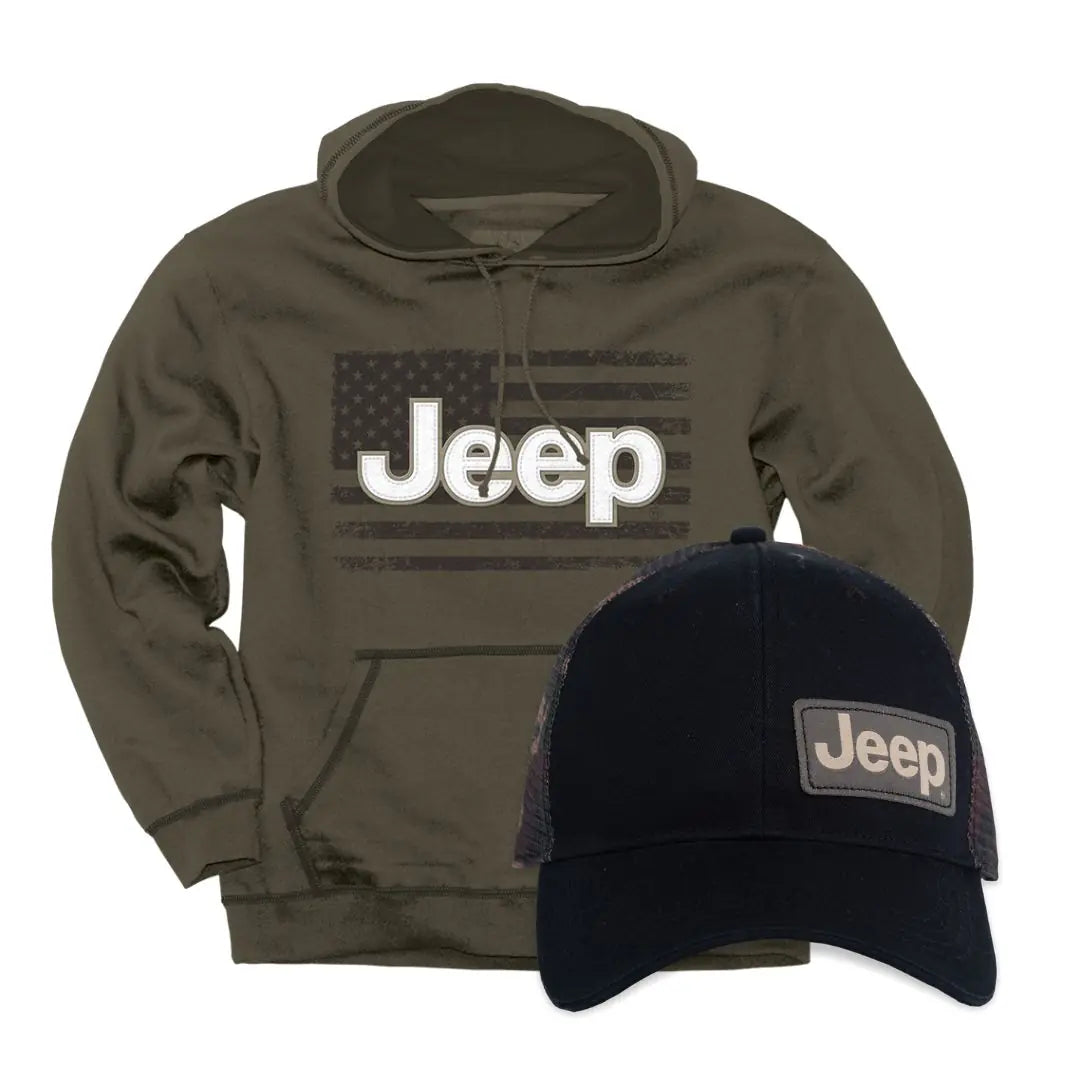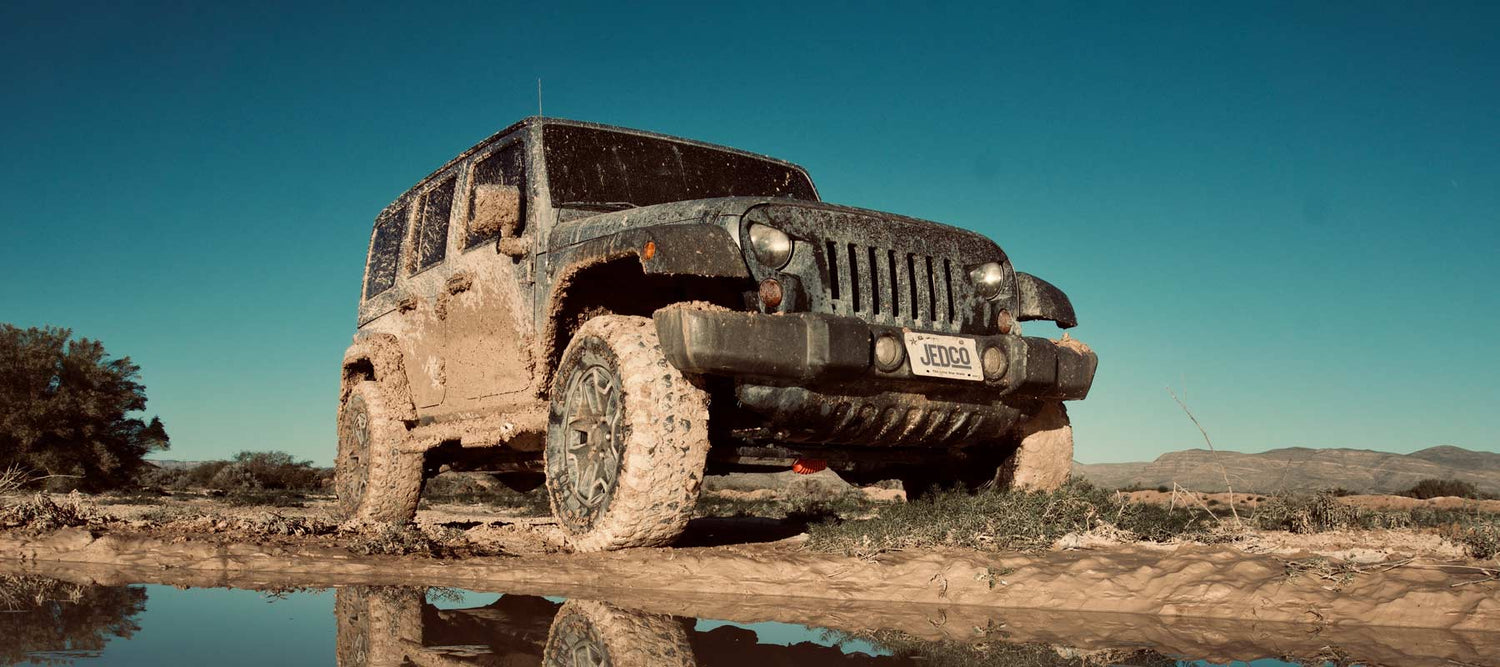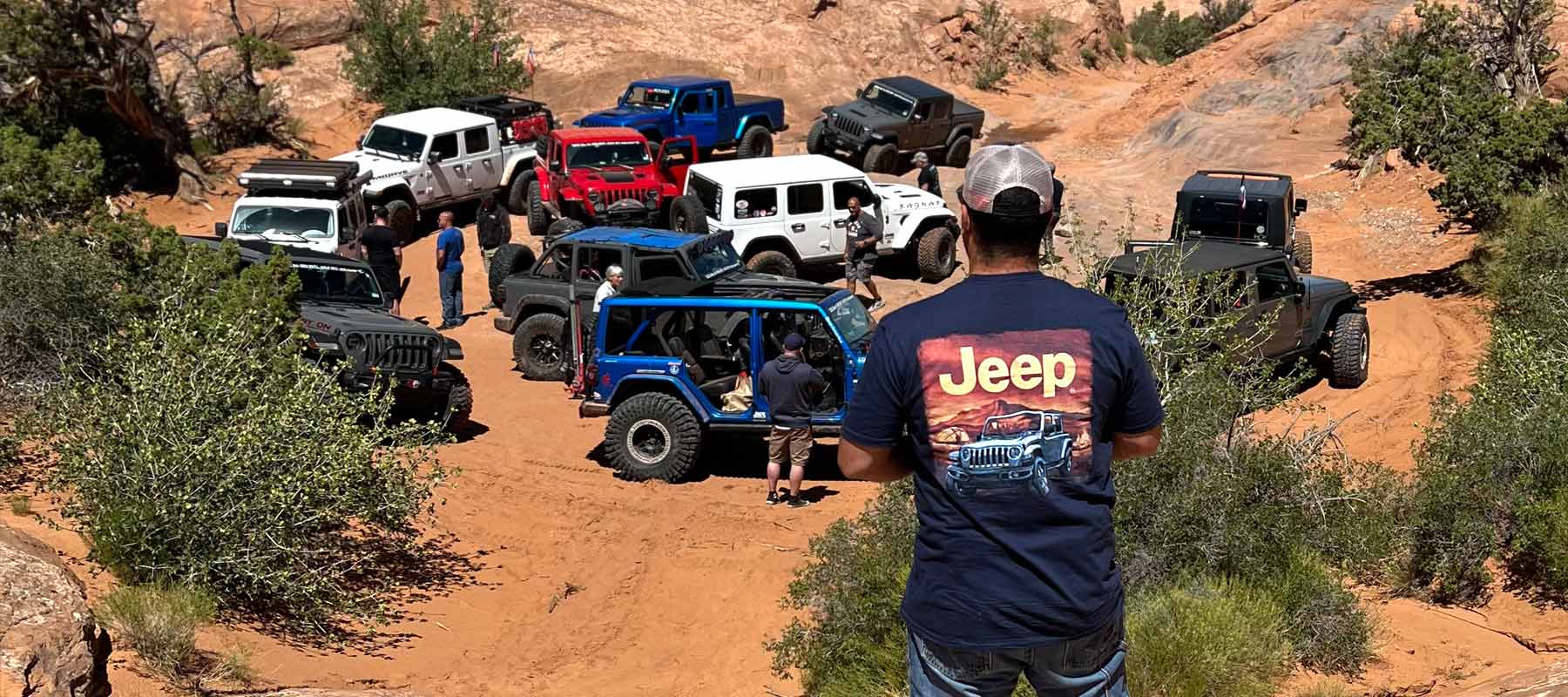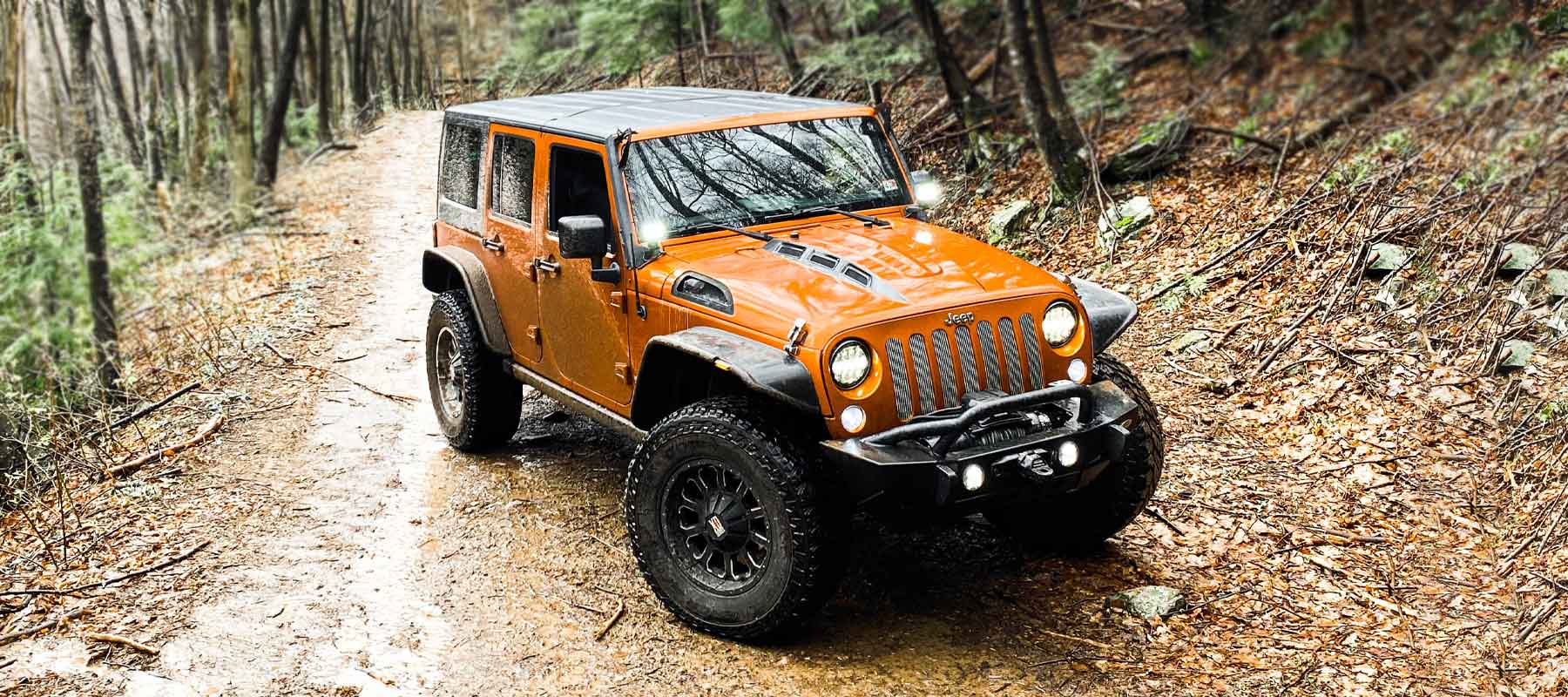Your Ultimate Cleaning Guide After Jeep Mudding

Going mudding in your Jeep is a fun-filled adventure. Your tires carve tracks in the muck as your engine roars and the mud flies. But after enjoying yourself in the muddy field, you get to the hard part: cleaning your Jeep. On wet trails, the tires spin and splash mud everywhere, including your Jeep. If you’re going door-less, dirty water can get inside the vehicle too. And the bonnet isn’t waterproof: it will allow mud and dirt into the engine. Simply put, the entire Jeep will get dirty and need a thorough cleaning. We’ve covered how to clean your soft top in another article, but we’ll handle the whole Jeep here.
Don’t let cleaning make you think twice about your fun. There are simple ways to clean your Jeep after an eventful mudding. This guide will help you learn how to clean various parts of your Jeep. Plus, you’ll get additional tips on caring for your four-wheeler after cleaning.
The Importance of Cleaning Your Jeep After Mudding
After mudding, you might try to avoid the tedious work of cleaning your Jeep. A mud-caked Jeep is a badge of honor, proving that you’re not just some mall-crawler. You’re just going to get it dirty again on the wet roads, so why bother, right? However, the longer you wait before cleaning your Jeep, the harder it will be to clean. In warm conditions, the mud will dry fast and then you’ll practically have to clean your Jeep with a chisel. Here’s why you should always clean your Jeep after mudding.
To Minimize the Risk of Overheating
When mud gets into the radiator, it clogs the fins that help to pass cooling air into the rest of your engine. The radiator is a heat exchanger, and if it’s clogged, your engine will overheat fast. This may lead to engine detonation and other problems, and then you’ll be looking at a hefty repair bill. Spraying off the front of your Jeep will help you avoid these radiator issues.
To Avoid Wheel Imbalance
Wheel imbalance occurs when one wheel has mud stuck to it and doesn’t come off even when driving. It can lead to constant shaking and an uncomfortable ride. Caked mud can also reduce your tires’ tread life, with one section wearing out faster than the other. Spraying the mud off will help you avoid this dreaded wheel imbalance, but so will getting high-quality tires. Some good all-terrain on and off-road tires include T3W tires, the Toyo 35x12.50r20lt tires, and Mickey Thompson Baja Legend EXP Tires.
To Prevent Rust
When water comes into contact with iron, oxidation occurs, leading to corrosion. That’s bad for your precious Jeep and all its metal components. When you drive your Jeep through dirty water, the moisture, salt and other chemicals can corrode your vehicle’s body and engine. The longer you take before cleaning, the more time the water will have to form rust, leaving your Jeep looking old and dingy. If you want your Jeep to maintain that new look, cleaning is essential.
To Enhance Driver Visibility
After off-roading, the mud and dirt can make your windshield and windows blurry. One of the most basic reasons to clean your Jeep is to increase driver visibility. A windshield full of mud makes it hard to see everything on the road. And headlights covered with caked dirt will serve little purpose at night. If you can’t see properly, you could jeopardize your safety. So to avoid getting into an accident, it’s critical to clean at least the windshield and the lights.
To Protect the Engine From Potential Damage
Once the engine comes into contact with water, it can rust. Not only will the rust make your engine less efficient, but it can accelerate the wear and tear of the metal, leading to potential cracks. Some engines may not be well-sealed, and if water gets inside, you’ll be in trouble. Cleaning helps prevent corrosion and maintains the lifespan of your Jeep.
Helpful Tools for Cleaning the Jeep
You might need the following tools to clean your Jeep effectively:
- Car wash shampoo
- A soft-bristled hand brush for scrubbing the exterior without scratching the vehicle
- A microfiber towel for drying your Jeep after cleaning
- A high-pressure washer
- A wheel cleaning brush
How To Clean the Body of Your Jeep After Mudding
Keeping your Jeep clean allows you to continue using it in between excursions. But cleaning a Jeep isn’t the same as cleaning a regular car. You can wash an ordinary car with a bucket of water and a soft cloth, no problem. A Jeep after mudding, however, is likely to have adhered mud, which can sometimes feel like concrete. But there is a solution: investing in a pressure washer will blast this mud away and make your work easier (and more fun).
Cleaning should start from the top to the bottom. It’s best to pick a shady spot to keep the soap from drying before rinsing. When cleaning the interior, use an air blower to remove debris. If you have leather seats, wipe them off using a cleaning towel. For other seat covers, use seat shampoo and a microfiber towel.
When cleaning the soft top, use products like Raggtop, Mopar, and Bestop. These cleaners will help wash the mud and contaminants from the soft top without causing damage to your windows. Moreover, they don’t contain any oil, which can attract and retain dirt. But if you don’t have any of these specialty cleaners, vinegar and water or a mild dish detergent will do.
You want to avoid using strong chemicals, which will do more harm than good. Household cleaners like Windex, Formula 409, or Fantastik contain alcohol and ammonia and will dry out the soft top material, leading to cracks, yellowing, and other discoloration.
Mix the cleaning agent with warm water. If the soft top has a lot of mud, use a soft-bristled brush to loosen it. Use a soft cloth for final cleaning and wash it all away with a hose. You probably don’t want to use a power washer on your soft top. It can look like you’ve traced lines into your fabric and it can damage stitching and seals. But if you're set on blasting away, make sure you are at least two feet back from your Jeep to reduce the pressure and minimize the risk of damage.
However, the body can certainly handle the pressure washer, especially when you’re first blasting away the mud. First, scrub the Jeep body with soapy water. You might let it soak for a while before you rinse it all away.
How To Clean the Tires of Your Jeep After Mudding
After washing the body, you can now give your full attention to the tires. Use the pressure washer to remove mud from the tires and the mudguard. Then use a wheel gel compound in a bucket of water to scrub the rims using a soft brush. Use a stiffer brush to clean the sidewalls of the tires.
You’ll want to scrub from the top to the bottom. Don’t forget to work on the mudguard before rinsing the tires. Lastly, use the pressure washer to rinse the tires and the mudguard. Otherwise, you risk mud deposits impacting your ride. This can happen with any radial tire or advanced tread design. It is especially important to clean any distinctive tread grooves or an asymmetrical tread pattern.
How To Clean the Undercarriage of Your Jeep After Mudding
The undercarriage is a bit challenging to clean. It has complex structures, some of which are hard to reach. Fortunately, off-roading rigs are usually higher off the ground. So you may not need a jack to elevate your Jeep.
Jeepers use different cleaning methods for the undercarriage. Some will put on goggles and slide underneath with a pressure washer. But you don’t need to go underneath the vehicle if you don’t want to. A high-pressure sprinkler functions as a pressure washer. You can just move it under the Jeep for a few minutes and then move it to a new location.
Using a sprinkler or a pressure washer may not remove all mud in less exposed areas. So you might use a brush to scrub off the dirt. Also, you can apply a degreasing agent to the undercarriage and wait for 20 minutes before using a pressure washer.
You may have to combine several methods to get the undercarriage cleaned. But to make your work easier, clean your Jeep immediately before the mud cakes and dries. Also, when you start cleaning your Jeep, flush water through the undercarriage to soak it. By the time you clean the body, the water will have loosened the mud and it will be easier to clean off.
Next Steps After Cleaning Your Muddy Jeep
Cleaning your Jeep is only the beginning of keeping it in good condition. If you want to preserve its value, constant maintenance is a must. After cleaning the soft top, you should apply a protectant product to prolong its life. Depending on the product you use, you can apply the protectant every 30 or 90 days, depending on your driving habits.
The undercarriage is prone to rust because it has exposed metal. To avoid corrosion, you can use waterproof rubber spray to provide a coating to the undercarriage. Alternatively, you can use simple lubricating oil. Coating the undercarriage with these products limits exposure to water and air and cuts down on corrosion. Also, the products make it easier to clean the next time you go mudding.
Do’s and Don’ts of Washing Mud Off Your Jeep
While cleaning your Jeep can help preserve its value, cleaning it the wrong way can cause more harm than good. To clean your Jeep in a way that doesn’t cause damage, here’s our list of do’s and don’ts.
Do’s:
- Wash as soon as you can. The longer you wait, the harder it gets to remove hardened mud.
- Use a high-pressure washer. It will help remove stuck mud that an ordinary garden hose can’t spray away.
- Clean the undercarriage to prevent rust.
- Use warm water for easy removal of dirt.
- Steam-clean your engine occasionally to wash all the nooks and crannies.
- Clean the engine with a hose and soap.
- Use Armor All to spray the bottom of your car. It will make it easier to remove mud.
- Use Simple Green cleaners to wash your Jeep if you want to be environmentally friendly.
- Clean the radiator to unclog the vents.
Don’ts:
- Use ammonia and alcohol-based cleaners. With time, these compounds will deteriorate and discolor the plastic surfaces of your Jeep.
- Use regular Pledge to clean windows, which will turn them yellow.
- Go to a car wash if your Jeep has a soft top. It can damage your soft top and scratch the windows. Best to wash your Jeep by hand.
- Forget to clean the smaller parts such as door handles and everything under the hood.
- Use a stiff-bristled brush to clean the soft top.
- Scrub the mud with a brush before spraying it first.
Final Words
Cleaning a Jeep presents a more unique challenge than cleaning just a regular car. Mudding Jeeps have mud stuck from the top of the vehicle to the undercarriage. If you don’t clean this mud sooner than later, it dries and makes your work harder. So the best thing is to clean your Jeep immediately after mudding.
Keeping your Jeep clean will not only make it look slick, but it will also keep your engine cool, prevent rust, maintain driver visibility, and ensure a smooth ride. To clean, you’ll need soap and water, a good cloth and brush, and maybe a pressure washer if your ordinary garden house won’t provide enough water pressure. Extra care on the soft top will keep it looking fresh.
Cleaning your Jeep allows you to use it in between mudding excursions. Best of all, it preserves your Jeep’s value. With these tips, you won’t think twice about taking your rig out for a ride in the mud. Let the mud fly and the good times roll!
Frequently Asked Questions
Here are some frequently asked questions about cleaning a muddy Jeep.
Should I Wash My Jeep After Mudding?
You might think: I’ll just go mudding again soon, so why bother? However, it’s essential to clean your Jeep after every mudding adventure. You’ll want to clean it as soon as possible since the longer you wait, the harder it gets to remove the mud. Mud can clog the radiator vents, which can make the engine overheat. Also, cleaning your mudding Jeep can help prevent corrosion and preserve the vehicle’s value.
How Do You Clean a Muddy Jeep Engine?
First, open the hood and let the engine cool down. Spraying cold water on a hot engine can cause damage due to rapid contraction. Second, remove the negative terminal from the battery to protect electronic devices. Then, use a plastic bag to cover the sensitive parts like the fuse box and the alternator.
Apply a degreaser or Simple Green and wait for a few minutes. Then use a pressure washer to remove mud. Depending on how dirty your engine is, you may need to scrub or repeat the washing cycles. Rinse and dry it using compressed air or a towel. Lastly, remove the plastic bag covering the electrical parts and reinstall the battery terminal.
Are Wranglers Good in Mud?
Wranglers are the best in the mud because they’re built to “Go Anywhere. Do Anything.” These four-wheel-drive machines can handle nearly any terrain, including muddy trails and bogs not to mention ice, snow, and rugged paths. Therefore, it can handle trails that most vehicles can’t. Also, they have on-road and off-road tires with good grips for muddy tracks.
Which Jeep Is Best for Off-Roading?
The Jeep Wrangler remains the most preferred vehicle for off-roading. Jeep Wranglers come in various models, such as the Rubicon and Willy Limited Edition. They all have tires with aggressive treads for gripping any terrain. They also have flexible suspensions and robust drivetrains for better handling in muddy and hilly places.
Can You Go Mudding in a Jeep?
Yes, you can go mudding in a Jeep. In fact, we recommend it. These vehicles are more resilient than most car models and better for off-roading. However, not every Jeep is recommended for off-roading. You’ll want one with a trail-rated badge. It must have a four-wheel drive with mud tires, and the undercarriage should also be higher off the ground to avoid getting stuck in the mud. The most suitable models are the Jeep Wrangler, of course, as well as the Jeep Cherokee and Jeep Gladiator.
How Deep in Water Can a Jeep Wrangler Go?
A Jeep Wrangler can go up to 30 inches underwater without damage. But if the ground is soft, the Jeep can sink a few inches. So to be safe, we recommend shooting for 20 inches. If water gets up to the bonnet, the engine could get flooded and ruined.
How Do I Prepare My Jeep for Off-roading?
Ensure your Jeep is capable of going off-road. It should be trail-rated with a four-wheel drive with aggressive tire treads. If not, you might get stuck in the mud.
In addition, check the location of your Jeep’s breathing tube. If the breather tubes for the rear and front axles are too low, you can’t cross deep water without damaging your SUV. However, you can improve water fording capabilities by extending its breather hose.
You can also consider coating the undercarriage of your Jeep with a rubber spray. Doing this will make it easier for you to clean after mudding on your favorite trail.
If you’re looking for mods that will help you off-road, the most important is a lift kit, which you need to accommodate bigger tires and to make sure your Jeep can clear those rocks. For a few hundred dollars, you can get a body lift kit to raise your Jeep one to three inches. Or you might spring for more involved suspension lift kits, which can lift your Jeep even higher. These will run you between $4,000 to $10,000. Whichever you choose, a lift kit is a must for any serious off-road adventure. After you’ve lifted your Jeep, you’re ready for a wheel size increase and a tire upgrade. You might get rugged alloy wheels and larger tires to fit your lift and help you crawl those rocks, or snag some mud tires to help your grip in the muck. Check out this handy Motortrend Jeep-specific guide on purchasing the tires that are right for you.
Next you’ll want a winch: if you’re off-roading right, you’re bound to get stuck at least once. A good winch can pull you free and remove any large obstacles blocking your way. Whether you opt for hydraulic or electric, there are many great aftermarket companies, including WARN, Superwinch, and Smittybuilt, which get excellent customer ratings.
Also, invest in good floor mats that are easy to clean and nerf bars for easier access when getting into the Jeep. In addition, getting fender flares for above your tires can help save your car from excess damage from flying debris.
